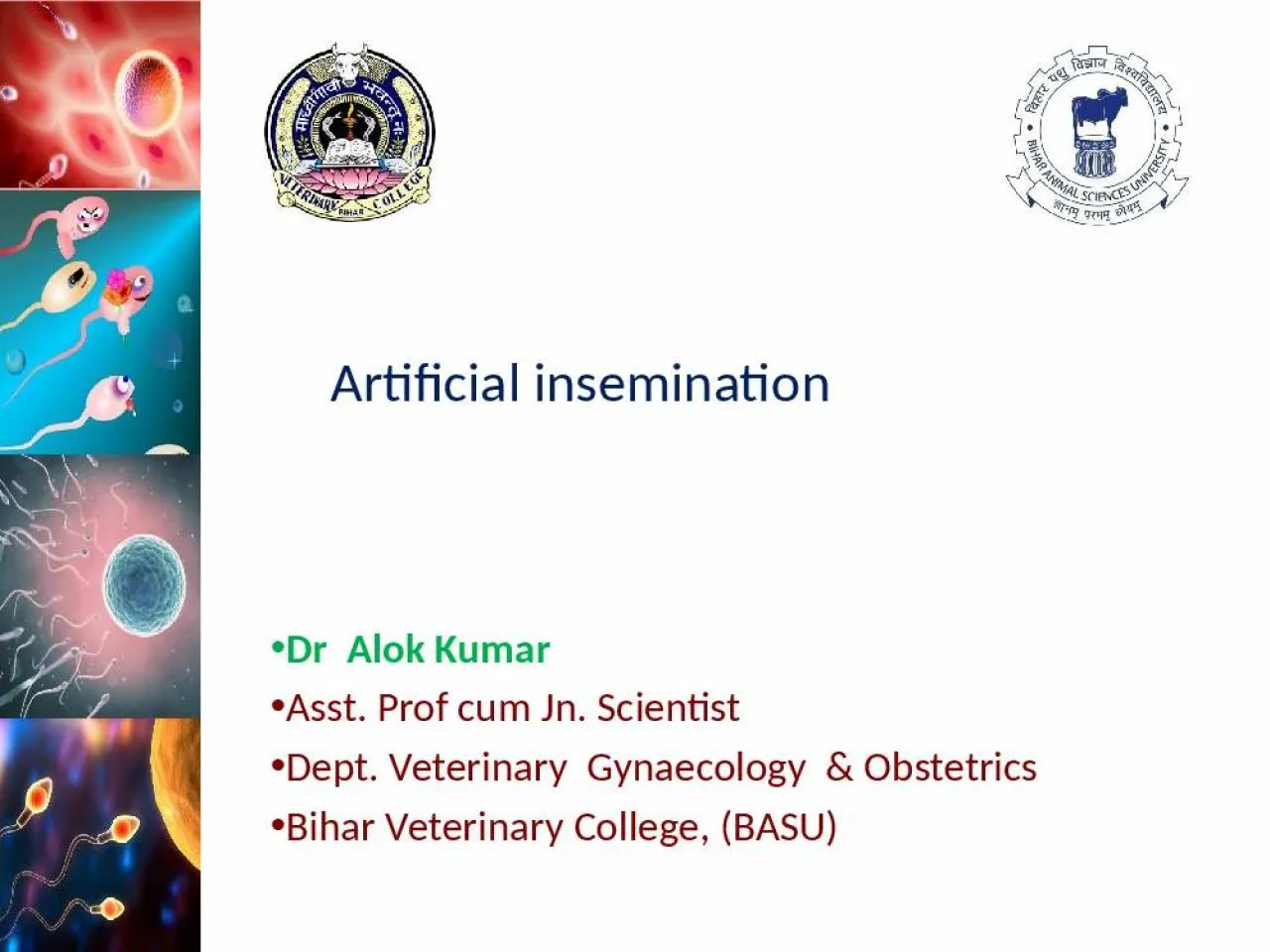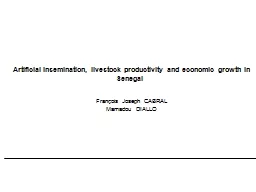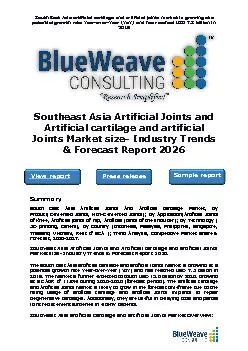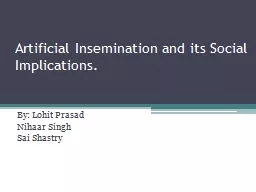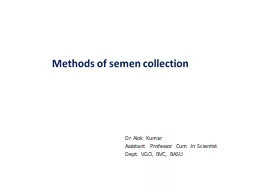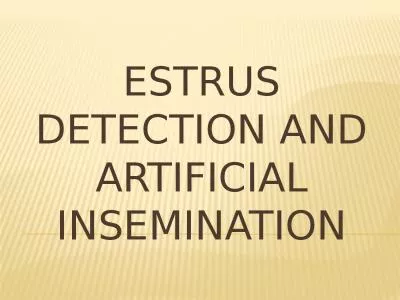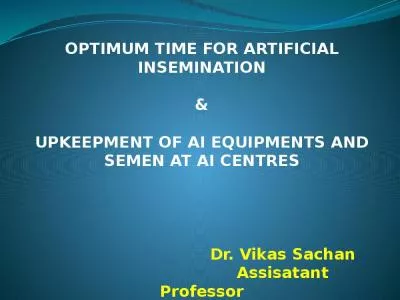PPT-Artificial insemination Dr Alok Kumar
Author : melanie | Published Date : 2022-02-15
Asst Prof cum Jn Scientist Dept Veterinary Gynaecology amp Obstetrics Bihar Veterinary College BASU Overview Present scenario Basics of AI Our firm footing Timing
Presentation Embed Code
Download Presentation
Download Presentation The PPT/PDF document "Artificial insemination Dr Alok Kumar" is the property of its rightful owner. Permission is granted to download and print the materials on this website for personal, non-commercial use only, and to display it on your personal computer provided you do not modify the materials and that you retain all copyright notices contained in the materials. By downloading content from our website, you accept the terms of this agreement.
Artificial insemination Dr Alok Kumar: Transcript
Download Rules Of Document
"Artificial insemination Dr Alok Kumar"The content belongs to its owner. You may download and print it for personal use, without modification, and keep all copyright notices. By downloading, you agree to these terms.
Related Documents

